
They contain important phytonutrients, which are nutrients found in plants that help us fight off disease (1). Greens contain vital fiber that helps keep digestion optimal with a healthy gut microbiome, and help us lose unwanted body fat.
Because we live in the day and age of cheap, processed, fake foods and less-than-stellar environmental situations, our bodies can easily get overloaded with toxic elements from everything from household cleaning products, beauty products, the things we eat and drink to the very air we breath that make it hard for the body’s natural filtration pathways to keep up.
That’s why it’s super smart self-care to support your all of your body’s systems with whole, real foods from reliable sources so you can serve your cells with high quality building blocks of energy, body tissue and brain power.
Greens and vegetables have a lot of super powers – they will:
- boost your immune system,
- support a glowing complexion,
- activate healthy digestion,
- decrease inflammation, joint pain, and stiffness, and
- improve your energy and mood.
Harness the Power of Micronutrients

In addition to our macros, we also need micronutrients – vitamins and minerals – to grow, metabolize properly, and enjoy an overall sense of well-being. Even though we only need a comparatively smaller amount of micronutrients than macronutrients, they are equally as important to our health and wellness.
Micronutrient deficiencies can lead to serious health concerns like fatigue, hair loss, muscle cramping, and migraines, none of which help get you closer to your goals!
Nature's Vitamins and Minerals: Micronutrients Overview
Recommended Dietary Allowances, or RDAs, represent the average daily dietary intake of each vitamin and mineral a person needs to stay healthy and steer clear of deficiencies. Click here to see Consumer Lab’s RDA values, which are all backed by scientific data, broken down by age, or click here to see the FDA’s Vitamin and Mineral Chart (updated periodically – sometimes the link changes).
Vitamins are essential organic nutrients that are not made in the body, at least not in sufficient amounts, so we need to get them other ways. The best, healthiest choice is through whole, unprocessed foods, like the ones found on the list below (2).
Vitamins are either fat-soluble (A, D, E, K) or water-soluble (B-complex, C), just meaning they require either healthy fat or water in order to be absorbed by the body.
ALL vitamins play important roles in your overall health.
- Vitamin A: is essential for eye and brain health; it regulates growth and keeps your immune system healthy
- Vitamin D: is a special vitamin that’s actually made in your body when your skin is exposed to sunlight. While it’s available in some foods and as a supplement, it’s most bioavailable when we get regular sun exposure and our body makes it the natural way. It functions to preserve and promote bone health, and helps to keep your respiratory system healthy. It also enhances your mental and emotional well-being and keeps your immune system functioning in top form (3).
- Vitamin E: protects not only the building blocks of your cells (lipids), but also your DNA by stopping free radicals from damaging the fragile structure of chromosomes.
- Vitamin K: activates the proteins in blood that are responsible for clotting. It’s also essential for protecting your heart and building strong bones.
- The B-complex vitamins: (which include thiamin (B1), riboflavin (B2), niacin (B3), pantothenic acid (B5), pyridoxine (B6), folate (B9), and cobalamin (B-12)) are important to brain health, necessary for regulating metabolism, influential in affecting mood, and preserves memory and cognitive function as you age
- Vitamin C: is an antioxidant – meaning it helps fight free radicals and protect your body from disease; it’s important for growth and healing, promotes skin elasticity and strength of connective tissue and bones, and enhances absorption of iron in the small intestine
Minerals are inorganic nutrients that also play a key role in keeping us healthy and properly functioning. As with vitamins, minerals are found in small quantities within the body and they are obtained from a wide variety of foods.
Trace elements (we need tiny amounts):
- Copper: allows your body to absorb iron; helps your body make the hemoglobin in your red blood cells; helps protect your body from free radicals; allows blood to clot properly; keeps your immune system strong.
- Iodine: allows your thyroid to make the hormones that help regulate metabolic rate and keep your heart, lungs and intestines healthy; helps prevent goiter, a condition characterized by an enlarged thyroid gland.
- Iron: approximately, two-thirds of the iron in your body is found in hemoglobin – the protein in your red blood cells. The iron in hemoglobin binds to oxygen from your lungs and delivers it to the rest of the tissues in your body. Iron also transports oxygen to your muscles and aids in the synthesis of neurotransmitters – the chemical messengers in your brain.
- Manganese: helps your body metabolize carbohydrates, protein and fat; also aids in bone formation.
- Selenium: helps regulate the thyroid hormones in your body and also functions as an antioxidant, protecting your body from free radicals – unstable substances that may contribute to the development of chronic diseases.
- Zinc: necessary for DNA and RNA synthesis; allows your body to produce white blood cells, which keep your immune system strong; plays a role in wound healing.
Macro elements (we need in larger amounts):
- Calcium: crucial for bone strength; responsible for muscle and blood vessel relaxation and contraction, nerve firing, and communication between cells.
- Magnesium: essential to many vital processes, like metabolism; vital to bone formation and synthesis of genetic material.
- Potassium: responsible for muscle and nerve function, a steady heartbeat, and cell detoxification; acts as the inverse of sodium.
- Sodium: helps muscles and nerves work properly by assisting muscular contraction and transmission of nerve signals; regulates blood pressure and volume.
These 4 minerals are commonly called Electrolytes, which play crucial roles in our body and support our healthy life. Found in blood, urine and sweat they help you in a variety of ways, including conducting nerve impulses, contracting muscles, keeping you hydrated and managing your pH levels.
It’s important to maintain electrolyte homeostasis and get a variety of each one in because a balance is key to keep your body functioning optimally. Imbalance can occur when you’re dehydrated (from vomiting, diarrhea or excessive sweating). High quality nutrition is the ideal way to maintain electrolyte balance, and vegetables – like leafy greens and avocados particularly can help you get there – as well as nuts, seeds and high quality salt.
Eat the Rainbow
The vibrant colors of GREENS and other vegetables indicate the special disease-fighting phytonutrients found inside. Phytonutrients are plant nutrients with bioactive food components that play an important role in supporting our health. Eating more can support your immune system, help you thrive, and protect agains heart disease, osteoporosis, cancer, diabetes and much more.
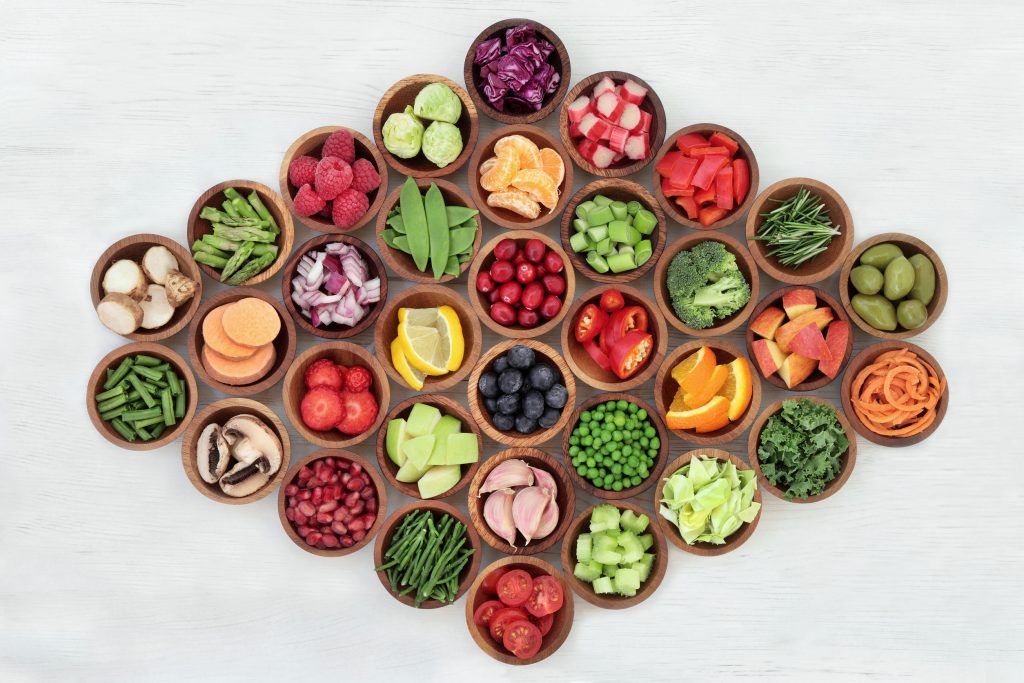
Taking vitamins may be necessary and recommended by your doctor – but don’t skip eating your greens in favor of a handful of pills. As naturally occurring compounds, phytonutrients found in plants are much more readily absorbed and used by your body than their synthetic counterparts.
Some examples of phytonutrients include polyphenols, resveratrol, flavanoids, isoflavanoids, and carotenoids. They can be anti-microbial, anti-oxidant, anti-inflammatory, anti-aging, neuroprotective, analgesic (pain relieving), and more! (4)
Here are some examples of phytonutrients and different vegetables you can find them in:
- GREEN veggies like spinach, broccoli, cabbage and brussels sprouts: lutein, zeaxanthin, isoflavones, flavanoids, and EGCG.
- RED veggies like chili peppers, tomato and red cabbage: lycopene, ellagic acid, and hydroxybenzoic acid.
- ORANGE veggies like squash, turmeric, pumpkin and carrots: alpha-carotene, flavanols, and terpenoids.
- WHITE veggies like garlic, onion, rutabaga and parsnips: flavanols, quercetin, and sulfides.
- PURPLE veggies like beets and eggplant: anthocyanins and resveratrol.
Let me make healthy eating easy for you! Take my Eating Type Quiz!
Soluble and Insoluble Fiber: the Difference
Soluble fiber (which your body can break down) helps slow the absorption of sugar, an important factor in weight regulation. Since soluble fiber takes longer to digest, it also means that more time can elapse before you feel hungry again.
Soluble fiber also promotes a healthy immune system by providing your “friendly flora” (or beneficial intestinal bacteria) with important nutrients it uses to fuel its own growth. This is actually really cool, and it makes a huge difference to your overall health (5).
As they metabolize some of the fiber you eat, these friendly microbes produce molecules called “short- chain fatty acids,” which have been associated with a decrease in cancerous colonic cells, reduction of serum cholesterol, and maintenance of both healthy blood sugar levels and healthy intestinal tract cell walls.
A higher prevalence of short-chain fatty acids (SCFAs) in studies has shown a decrease in body-weight (6). This increase in SCFAs indicates a healthy gut microbiome and this further proves the idea that a higher fiber intake leads to weight loss (which really means fat loss).
Insoluble fiber is not digested by the body, which makes it extremely important to consume on a regular, consistent basis. As it goes through the digestive tract, insoluble fiber binds to toxins and carries them out of our body.
Without a diet that contains adequate fiber, food particles and waste byproducts can get stuck or build up in the looping, folding twists of the intestines over time and cause inflammation, increased blood pressure, and toxicity in the body. We definitely can do without all that, so start looking for ways to increase your Greens!
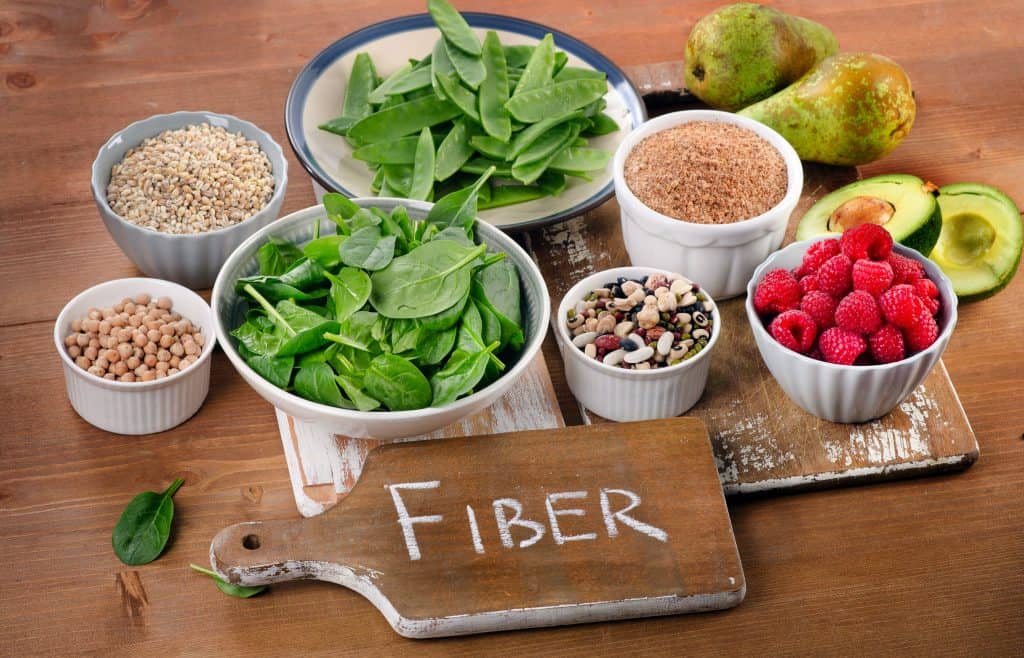
How Fiber Supports Your System
Dietary fiber, especially from fresh vegetables has many important functions like intestinal peristalsis (moving food through the GI system), weight reduction by the satiety mechanisms (feeling full), preventing colon cancer, reducing cholesterol and post-meal blood sugar responses (7).
In recent years, we’ve seen an increase in inflammation and a decrease in dietary fiber consumption in Western culture – mainly attributed to reliance on fast foods and processed convenience foods.
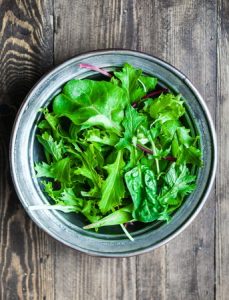
Studies show a negative relationship between fiber intake and inflammatory markers in chronic diseases, so when fiber intake goes down, inflammatory markers go up, creating a stronger prevalence for diseases like obesity, type-2 diabetes, metabolic syndrome and cardiovascular disease.
Emerging research highlights the link between a higher fiber intake and substantial effects on the microbiome and human health (8). Plant-based foods and GREENS are the primary sources of bioactive compounds and dietary fiber leading to these improved health effects.
Your gut health is synonymous with immune function, and fiber plays an important role in supporting your immune system. Eating the right kinds of fiber in the proper amounts (women: 30-35g/day) from whole foods like greens can improve your gut microbiome by feeding your good gut bacteria, which will improve your immune system leading to a healthier you.
Fiber plays a key role in helping you maintain or achieve your optimal weight.
High-fiber foods generally require more chewing time, which gives your body more time to register when it’s full, helping you to avoid overeating.
Additionally, high-fiber foods decrease energy density. This means they are less “energy dense” than other foods like healthy fats. There is less energy for the amount of food volume. This means you can eat more and look better at the same time by helping you feel fuller, longer, while triggering your mental “stop eating” shutoff valve.
Speaking of healthy fat, fiber rich greens are an ideal compliment to fat in your diet. Combining high-fiber green foods with healthy fats helps you boost the nutrients found in the greens and maximize the utility of the energy provided from the fat.
When, and Which Greens Should I Eat?
Here’s a sampling of greens and vegetables high in both micronutrients and fiber:
- spinach
- kale
- swiss chard
- arugula
- romaine lettuce
- bok choy
- green beans
- mustard greens
- turnip greens
- collards
- broccoli
- brussels sprout
- cauliflower
- green and red cabbage
- herbs such as green onion, cilantro, parsley and basil
- summer and winter squash (acorn squash has 9g of fiber per cooked cup)
- pumpkin
- garlic (one clove of garlic per day can have an anticoagulant effect)
- beets
- carrots (the bioavailability increases by 85% when carrots are cooked)
- avocado
- lima beans
- artichoke
- peas
- edamame
How to Eat Enough Greens Each Day
There’s no wrong time for greens!
You can eat them morning, noon, and night, and include them with breakfast, lunch, and dinner. They make a wonderful snack, and Greens are even my #1 go-to secret weapon against late night sugar cravings!
It’s a good idea to regularly rotate which greens you’re eating, because no single food contains all of the vitamins and minerals we need – therefore, a balanced and varied diet is necessary to hit all the bases on a regular basis.
Even with so many great Green options, it can still be tough to find enough creative ways to include them each and every day.
Here are some of the ways I get them in on a daily basis…
Green Smoothies: This is my favorite way to ensure I get enough Greens each day in my diet. You can find many Green Smoothie recipes on the blog, and for many more, each of my eating guide programs contains numerous unique Green Smoothie recipes. I’ve included a guide here for you to create your own:
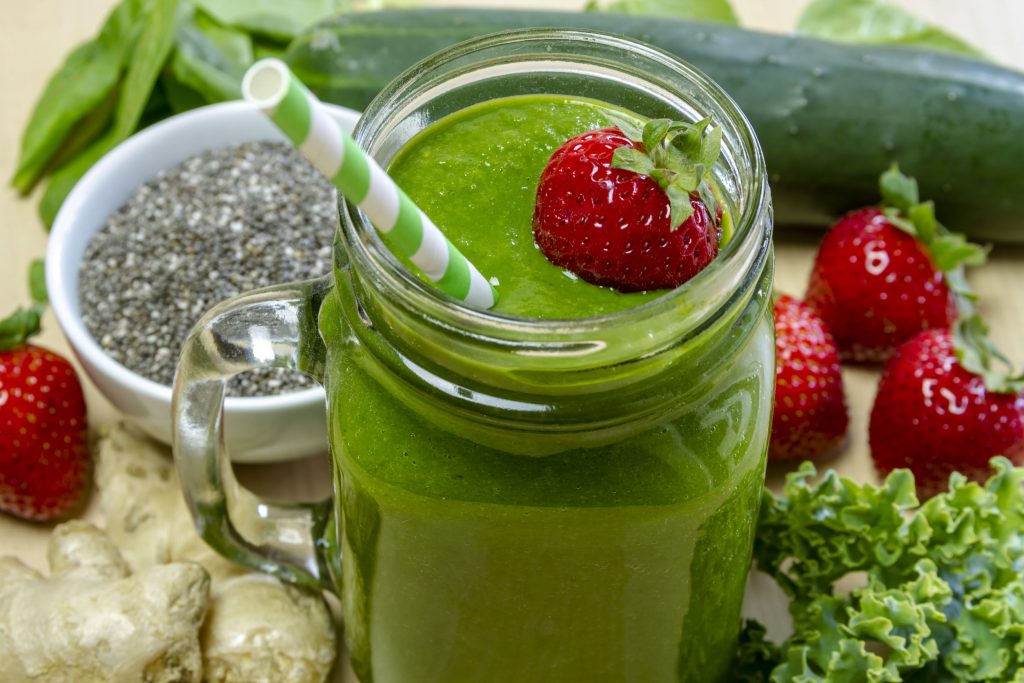
How to Create the Perfect Green Smoothie
- Base: greens – kale, chard, spinach, watercress, collards, bok choy, PLUS herbs like mint, parsley
- Protein – a smoothie is a great opportunity to include a serving of protein – I always opt for a quality protein powder like one of these.
- Healthy fats – a small amount goes so far in helping your cells perform their vital functions of using all of these nutrients – avocados, nuts and seeds, coconut oil, olive oil, nut oils, and nut butters
- Superfood Nutrients: – antioxidants, free-radical destroyers, immune boosters, alkaline/acidity balancers – citrus like lemon or lime, turmeric, grapeseed oil extract, spices: fresh ginger, cinnamon, nutmeg, cardamom, cacao powder
- Flavor and Fiber: fruit – antioxidants, fiber, and keeps blood sugar stable while still providing sweetness. I use berries (raspberries, blueberries, blackberries), apples, figs, and sometimes bananas, but I try to avoid the sweeter, tropical fruits because of their higher glycemic index when I’m working towards a fitness goal
- Liquid: – Water, almond milk, hemp milk, coconut milk, and other non-dairy kinds of milk
- Blend: Use a high powered blender like my Blendtec to make the best tasting, smoothest smoothies. A nutribullet is also great. If you’re working with a conventional blender, blend your greens and liquid first before adding other ingredients to ensure a smooth blend.
Greens Supplements: Berry Green Protein is my 100% organic, high protein (22g protein per serving), nutrient-dense whole food powder that combines 15 superfood greens and berries into one delicious smooth strawberry vanilla flavored shake!
It’s great if your’e on the go or just want an additional serving of greens (and protein) in your day!
Salads: Keep salads interesting by varying their colors, textures, and varieties. Perk them up with small tender leafy greens such as romaine lettuce, spinach, and arugula mixed with different kinds of accompaniments such as tomatoes, cucumbers, and carrots.
Wraps: Make a wrap with tuna, chicken or turkey and add romaine lettuce, spinach, arugula, and other veggies for some extra flavor.

Add to soup: Add greens with larger, tougher leaves such as collard greens, kale or mustard greens into your favorite soup.
Sautee or Stir-fry: Add chopped spinach, bok choy, or broccoli to chicken or tofu stir-fried with olive or avocado oil with some garlic, onion or ginger.
Steamed: Steaming collard greens, mustard greens, kale, Swiss chard or spinach until they are slightly soft is a great option.

Egg Breakfast: Add steamed broccoli and/or spinach to an egg-white omelet for a vitamin and iron rich meal.
Let me support you with a healthy eating plan that incorporates all the nutrients you need to thrive!

The Body Fuel System #BFS will….
- BOOST your metabolism to its OPTIMAL state
- Speed up FAT LOSS – naturally
- ELIMINATE the need to count, track or obsess over calories, points or numbers
- Support you to LOOK and FEEL YOUR PERSONAL BEST… and stay that way – all while eating foods that taste great!
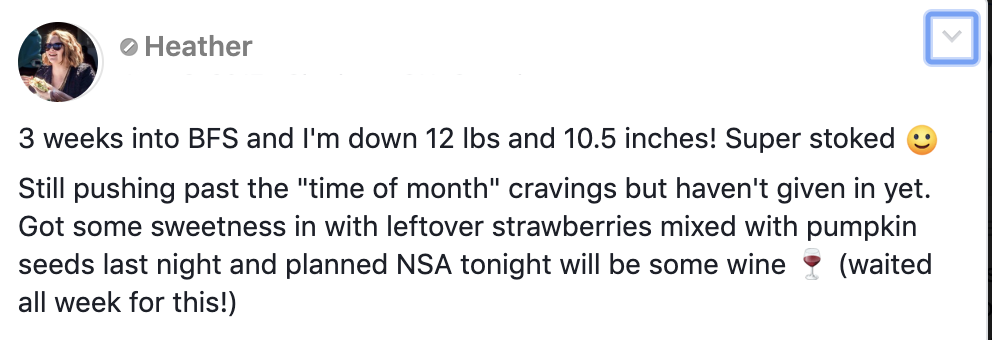
The Body Fuel System uses my simple, proven Eating Types to make it easy to stay on track. It also gives you healthy, fat-burning recipes and foods you can eat to look and feel your BEST every day!
Recipes like….
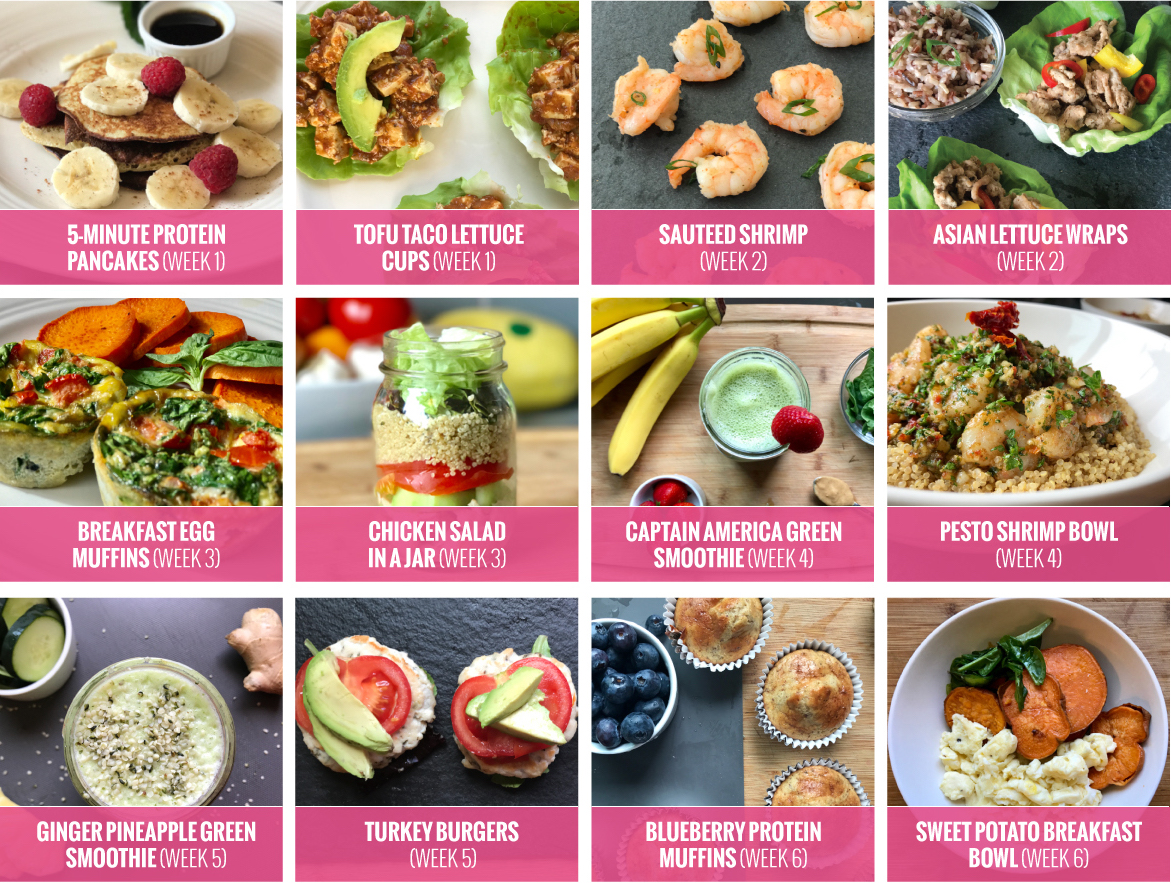
This is my signature eating system and it contains 6 weeks of done-for-you meal planning and recipe guides! You will not only learn the strategies that have given me long-term success, but also enjoy the time-saving benefits of having it all planned out for you!
Learn more right here, and find out why people love this program so much!
- Poe, Kristen. “Plant-Based Diets and Phytonutrients: Potential Health Benefits and Disease Prevention. Archives of Medicine.” December 2017. http://www.archivesofmedicine.com/medicine/plantbased-diets-and-phytonutrients-potential-health-benefits-and-disease-prevention.php?aid=21427
- Harvard Health Publishing. “Getting your vitamins and minerals through diet Harvard Health.” April 2018. http://www.health.harvard.edu/womens-health/getting-your-vitamins-and-minerals-through-diet
- Aranow, Cynthia. “Vitamin D and the immune system.” Journal of investigative medicine : the official publication of the American Federation for Clinical Research. 2011. https://www.ncbi.nlm.nih.gov/pmc/articles/PMC3166406/
- Charu Gupta, Dhan Prakash. “Phytonutrients as therapeutic agents. J Complement Integr Med.” September 2014. https://www.ncbi.nlm.nih.gov/pubmed/25051278
- Li, Fei et al. “Human gut bacterial communities are altered by addition of cruciferous vegetables to a controlled fruit- and vegetable-free diet.” The Journal of nutrition. 2009. https://www.ncbi.nlm.nih.gov/pmc/articles/PMC2728691/
- Shyamchand Mayengbam et al. “Impact of dietary fiber supplementation on modulating microbiota-host-metabolic axes in obesity.” J Nutr Biochem. November 2018 https://www.ncbi.nlm.nih.gov/pubmed/30572270
- Ana Maria Pita Lottenberg et al. “Effects of dietary fiber intake on inflammation in chronic diseases.” Einstein (Sao Paulo). June 2010. https://www.ncbi.nlm.nih.gov/pubmed/26760015
- Singh J, et al. “Review on Bile Acids: Effects of the Gut Microbiome, Interactions with Dietary Fiber, and Alterations in the Bioaccessibility of Bioactive Compounds.” J Agric Food Chem. April 2019. https://www.ncbi.nlm.nih.gov/pubmed/30969768

